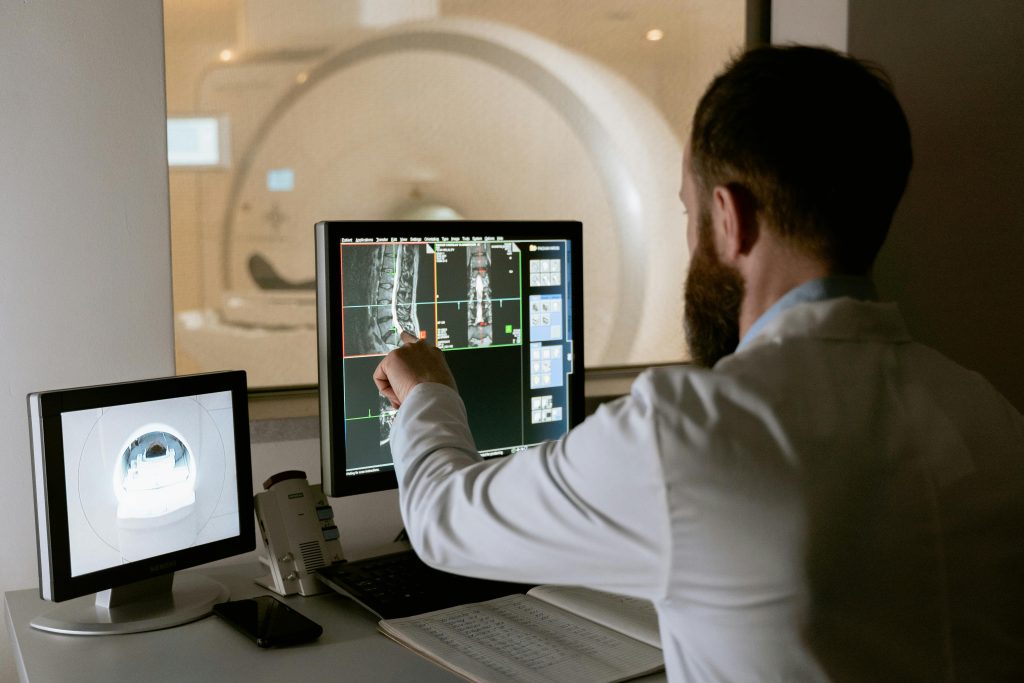Medical imaging is a cornerstone of modern healthcare, allowing doctors to see inside the body and diagnose conditions accurately. From X-rays and CT scans to MRI and ultrasound, imaging procedures provide critical information that guides treatment, monitors disease progression, and improves patient outcomes.
In this article, we explore medical imaging statistics, including global trends, MRI statistics, modality-specific insights, and the rising role of MRI in diagnostics.
Overview of Medical Imaging
Medical imaging procedures use a variety of technologies to visualize the internal structures of the body. Some rely on ionizing radiation, such as X-rays, CT scans, and nuclear medicine, while others, like MRI and ultrasound, do not. Radiologists and trained imaging professionals perform these procedures, which are regulated by federal and state programs to ensure patient safety.
The primary benefits of medical imaging include providing detailed views of organs, bones, and tissues, guiding surgical procedures, and helping diagnose conditions that are otherwise difficult to detect. However, certain procedures carry small risks, such as a slight increase in cancer risk from ionizing radiation. Healthcare providers follow the ALARA principle, “as low as reasonably achievable”, to minimize exposure while maintaining image quality. Some facilities also utilize medical imaging staffing services to ensure trained professionals are available to deliver accurate and timely imaging results, reflecting broader medical imaging statistics that show growing demand for imaging procedures.

Medical Imaging Statistics Utilization
A 2019 study of medical imaging statistics in the U.S. and Ontario, Canada, revealed that imaging use increased significantly between 2000 and 2016. Among adults and older adults, the rates of CT and MRI use continued to rise, though growth slowed in recent years.
Specifically, MRI usage among U.S. adults increased from 62 per 1000 in 2000 to 139 per 1000 in 2016, and among older adults, it increased from 11.3% in 2000-2005 to 2.2% in 2005-2016. In children, MRI use followed similar upward trends, even as CT use stabilized or declined.
Overall, the study included 135,774,532 imaging examinations, with 5,439,874 (4%) in children, 89,635,312 (66%) in adults, and 40,699,346 (30%) in older adults. These numbers highlight the increasing reliance on medical imaging across all age groups.
MRI Statistics and Global Usage
Magnetic Resonance Imaging (MRI) is a non-radiation-based imaging technology that produces highly detailed images using strong magnetic fields and radio waves. According to recent medical imaging statistics, approximately 100-150 million MRI scans are performed worldwide each year, with the United States accounting for nearly 40 million scans annually.
MRI infrastructure varies globally. Japan leads with 59.81 MRI units per million population, followed by Greece with 39.11 units, then South Korea with 38.66 units and forth the United States with 37.98 units per million people. The United States has approximately 12,000 MRI machines installed, according to surveys back in 2015, and globally, around 5,000 new MRI units are sold annually.
The global MRI market value is projected to grow from USD 7.55 billion in 2025 to USD 13.32 billion by 2034, at a CAGR of 6.52%. Growth is driven by aging populations, rising chronic disease prevalence, and technological advancements such as faster scanning, improved image quality, and energy-efficient systems. MRI’s radiation-free imaging continues to make it a preferred choice for safe and detailed diagnostics worldwide.
MRI and Patient Care
MRI scans provide detailed imaging of tissues, bones, joints, and organs. Unlike X-rays and CT scans, MRIs do not expose patients to ionizing radiation, making them suitable for repeated use, pediatric patients, and research studies. MRI procedures usually last from 15 minutes to 90 minutes, depending on the scan, and have become more patient-friendly with advancements in machine design, including larger openings for claustrophobic patients.
The growing number of MRI scans performed in the U.S., as mentioned earlier in our medical imaging statistics (approximately 40 million annually) reflects their critical role in diagnostics. Employment of radiologic and MRI technologists is projected to grow 5% from 2024 to 2034, faster than the average for all occupations, with about 15,400 openings expected each year due to growth and workforce replacement needs.

Medical Imaging Data and Research
Efforts like the Medical Imaging and Data Resource Center (MIDRC) demonstrate the increasing role of imaging data in research. MIDRC, launched in 2020 and funded by the NIH’s NIBIB, provides an open-access platform for medical images, including COVID-19-related datasets. Collaborating with the RSNA, ACR, and AAPM, MIDRC supports AI and machine learning applications for medical imaging research, aiming to improve diagnosis, prognosis, and patient care.
MIDRC’s work also facilitates standardized, high-quality imaging datasets that can be used for AI development, clinical research, and education. Such initiatives are helping bridge gaps between imaging technology, research, and real-world healthcare applications.
Conclusion
Medical imaging statistics reveal the rapid growth and critical importance of imaging in modern healthcare. MRI, in particular, has become a central tool, with 100-150 million scans globally and 40 million scans in the U.S. annually.
Advancements in technology, improved accessibility, and data-driven initiatives like MIDRC are shaping the future of diagnostics, enabling safer, more accurate, and efficient patient care. As demand continues to rise, medical imaging will remain a vital component of healthcare systems worldwide, providing insights that save lives, guide treatment, and inform research.
Sources:
https://www.towardshealthcare.com/insights/mri-market-sizing
https://www.statista.com/statistics/282401/density-of-magnetic-resonance-imaging-units-by-country
https://pubmed.ncbi.nlm.nih.gov/38021512
https://pubmed.ncbi.nlm.nih.gov/31479136
https://www.bls.gov/ooh/healthcare/radiologic-technologists.htm
